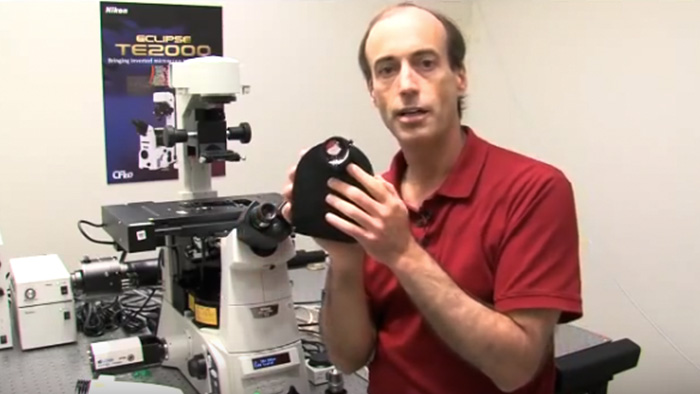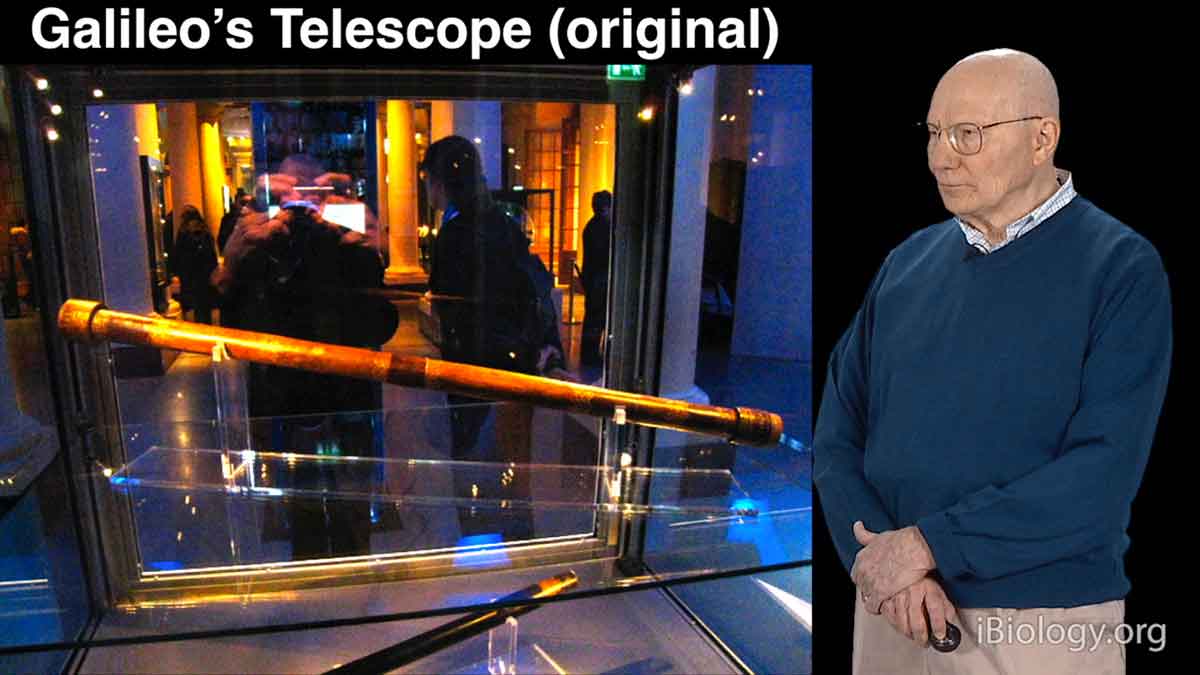Talk Overview
In this talk about resolution in microscopy, Jeff Lichtman describes the diffraction of light, a key principle in image formation and a factor that limits the resolution of a conventional light microscope. The behavior of light traveling through an objective is described along with the concept of numerical aperture. The “point spread function” (or PSF) and Nyquist sampling are explained, which are critical concepts for understanding image resolution and detection of images.
Questions
- When light passes through a pair of slits, a series of bright and dark bands are produced. This is best described by:
- Light traveling as particles that collide and self-destruct to produce the dark bands.
- Wavelets that emanate from the slits and that produce constructive or destructive interference.
- Spherical waves traveling towards the slits emerge on the other side as planar waves.
- The dark bands are produced by light waves that travel the same distance or by waves that travel an extra distance of one or multiples of the wavelength of light.
- Resolution in the microscope can be best improved by:
- Using a high numerical aperture objective
- Increasing the magnification
- Decreasing the wavelength of the illuminating light
- Using a highly sensitive CCD camera
- The Rayleigh criterion for lateral resolution is
- equal to the lamba (the wavelengh of light)
- equal to (0.61 x lambda)/N.A.
- equal to 2 x N.A.
- equal to (2 x lambda)/N.A.
- True or False. When light travels through a lens, the width of the point spread function is determined by the most lateral wavelets emanating from the converging wavefront.
- The z axis resolution of a point spread function for a 1.4 NA lens and green light
- Similar to the x-y resolution
- Approximately two-fold better than the x-y resolution
- Approximately two-fold worse than the x-y resolution
- Approximately four-fold worse than the x-y resolution
- To achieve full resolution, the Nyquist sampling criterion states that image must be sampled at a minimum of ___ of the theoretical limit of resolution
- 1 X
- 2 X
- 5 X
- 10 X
Answers
View AnswersSpeaker Bio
Jeff Lichtman

Jeff Lichtman’s interest in how specific neuronal connections are made and maintained began while he was a MD-PhD student at Washington University in Saint Louis. Lichtman remained at Washington University for nearly 30 years. In 2004, he moved to Harvard University where he is Professor of Molecular and Cellular Biology and a member of the… Continue Reading








Leave a Reply